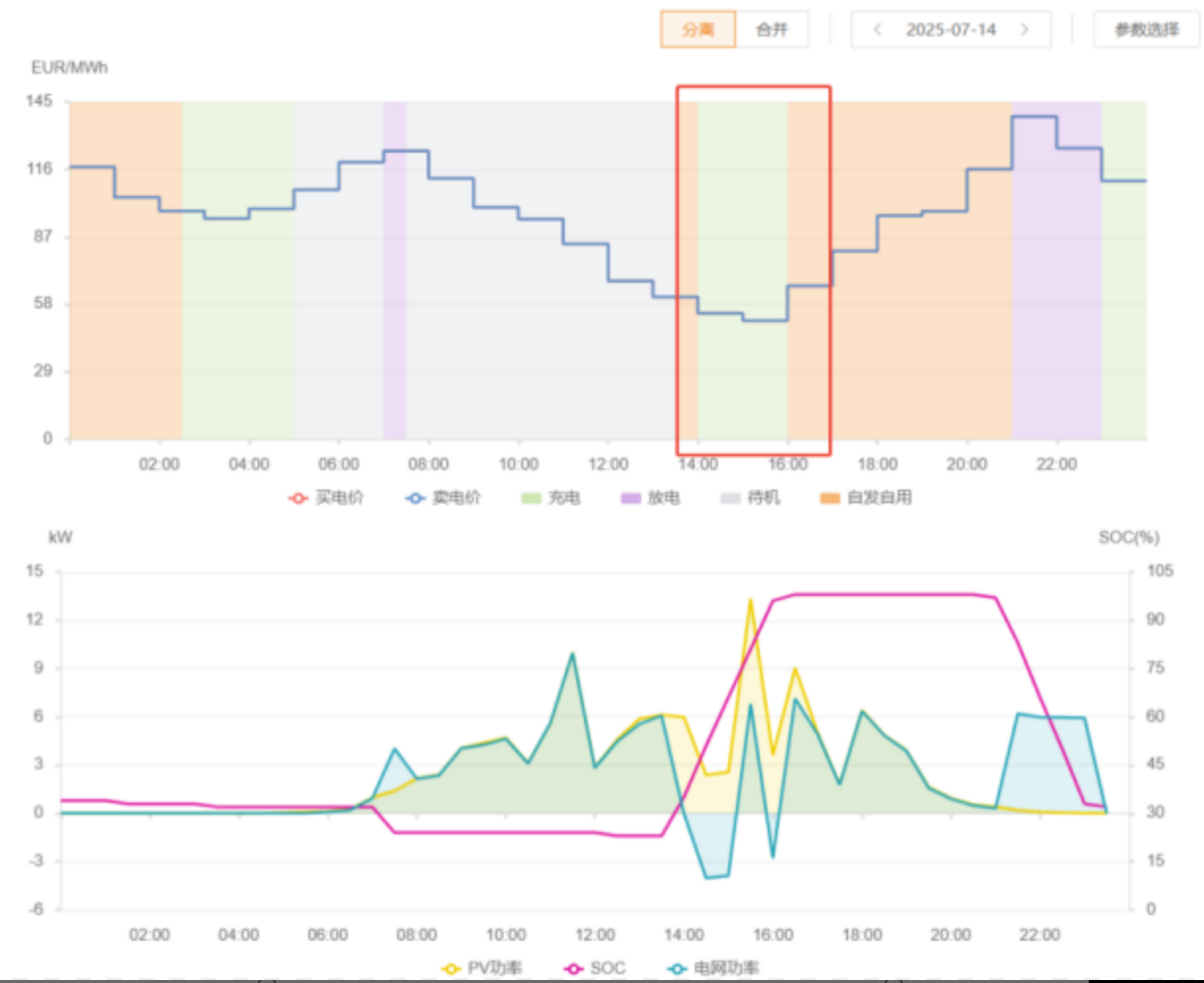Why is the battery not discharging during the scheduled discharge period?
If the current mode is Revenue Maximization, please check if the battery SOC is lower than the Target SOC for Discharging.
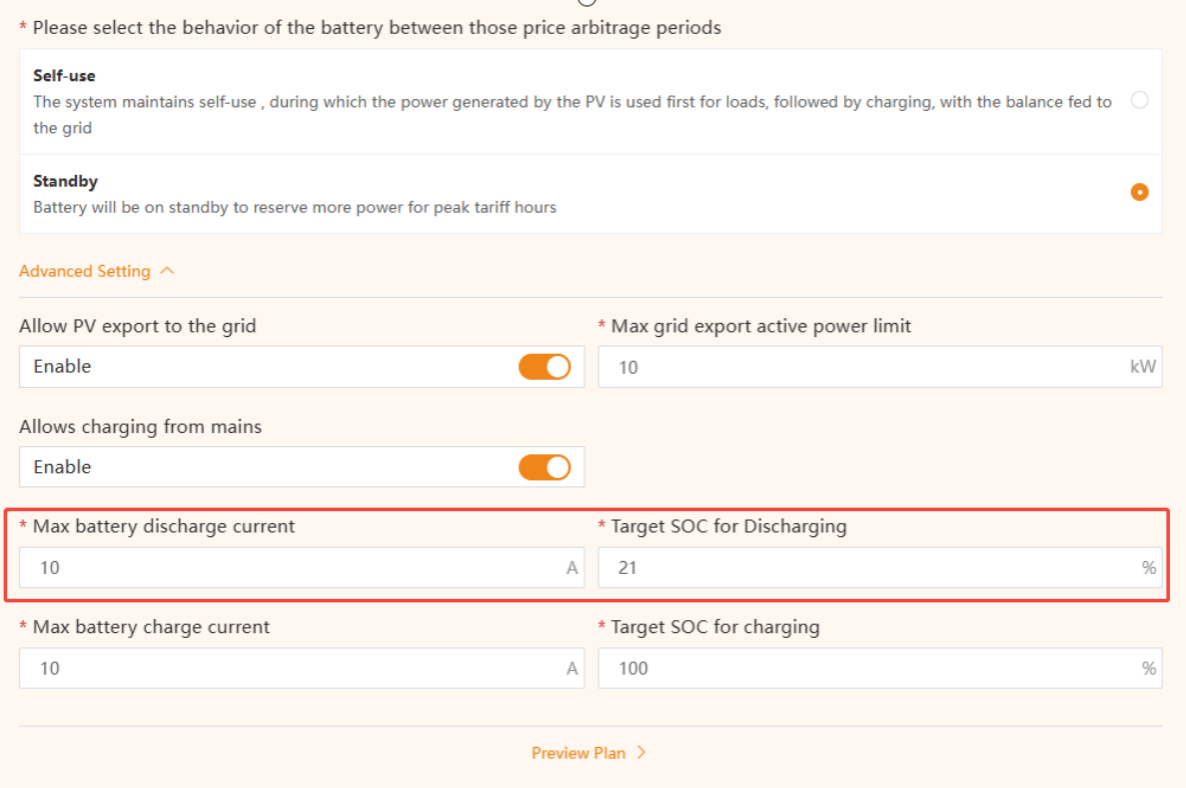
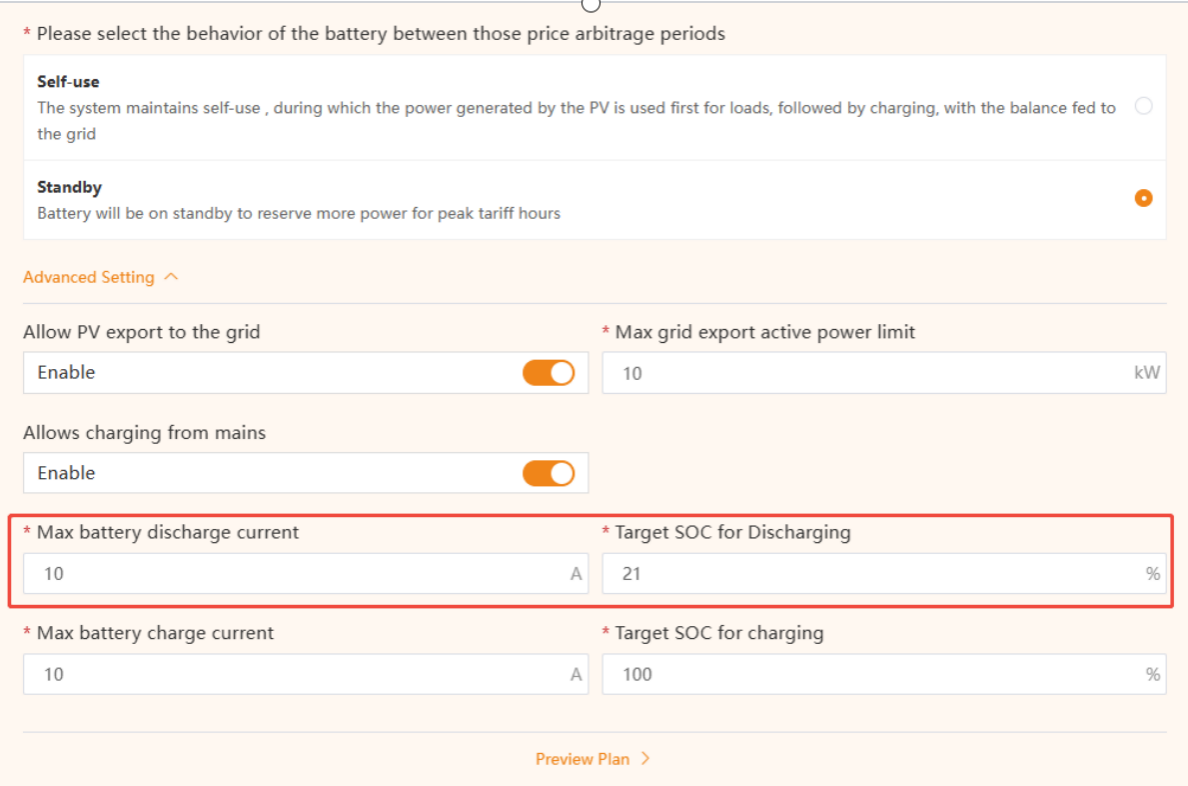
Please check the Max Grid Export Active Power Limit setting. The battery may fail to discharge to the grid if the upper limit has been reached.

Why is the battery not charging during the scheduled charging period?
If the current mode is Revenue Maximization, please check if the battery SOC has already reached the Target SOC for charging .
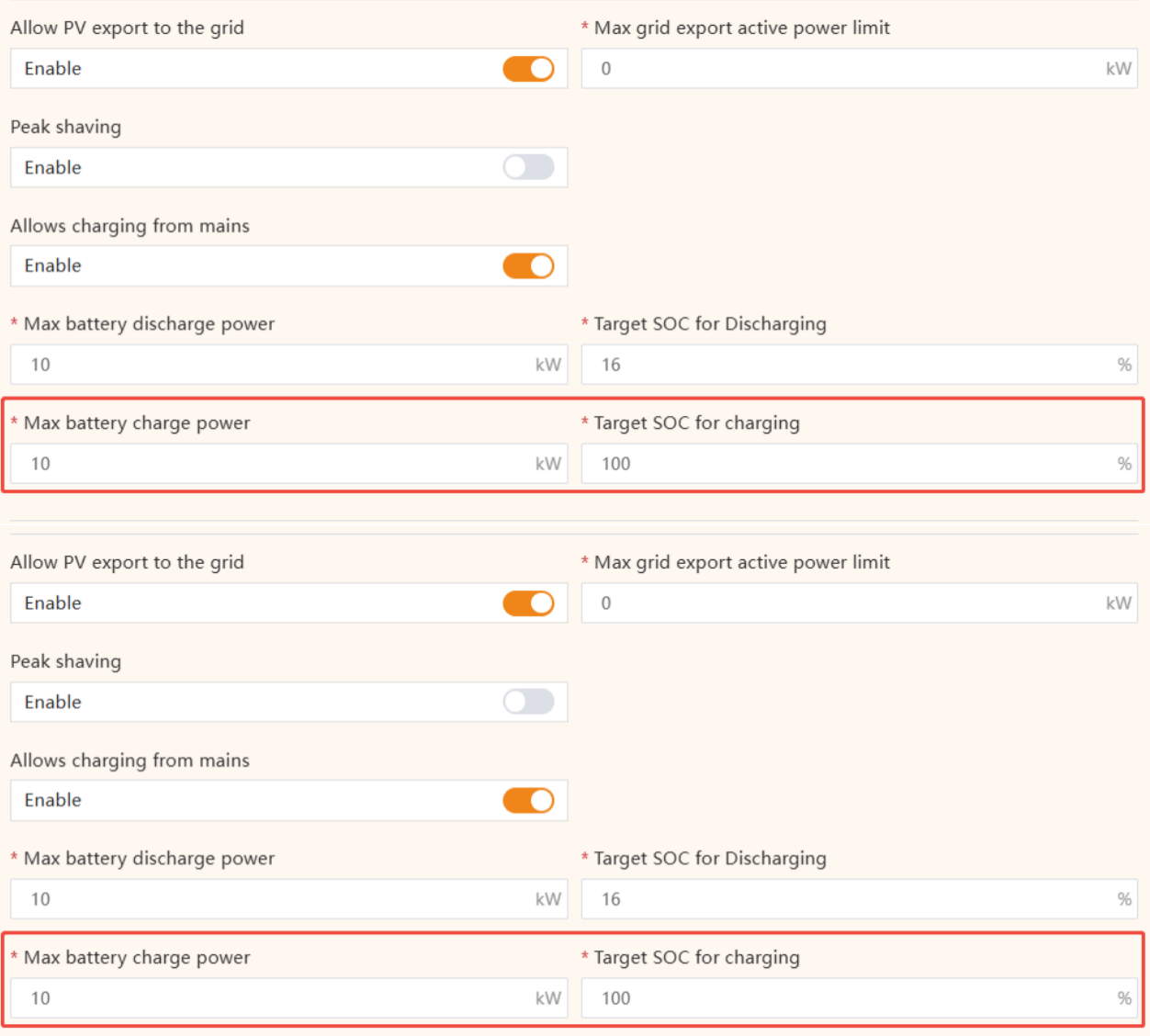
Please ensure that Allow charging from the mains is enabled. Otherwise, if no surplus PV power is available for charging at this time, the battery won't charge during scheduled periods.

If Peak Shaving is enabled, Please verify if the current import power has reached the Max grid import active power limit, which would prevent battery charging.

Why doesn't the system prioritize battery discharge during self-use period when PV power is insufficient for the load, instead opting to purchases power from the grid?
Please enter the Inverter Control page and check the values for the following settings:
- OverDischarge SOC: If current battery SOC is lower than the OverDischarge SOC, the battery won't be able to discharge.
- orceCharge SOC: If current battery SOC is lower than the ForceCharge SOC, the battery can't discharge.
- Battery Reserve: If Battery Reserve is enabled and the current battery SOC has reached the configured reserved SOC, the battery won't be able to discharge.
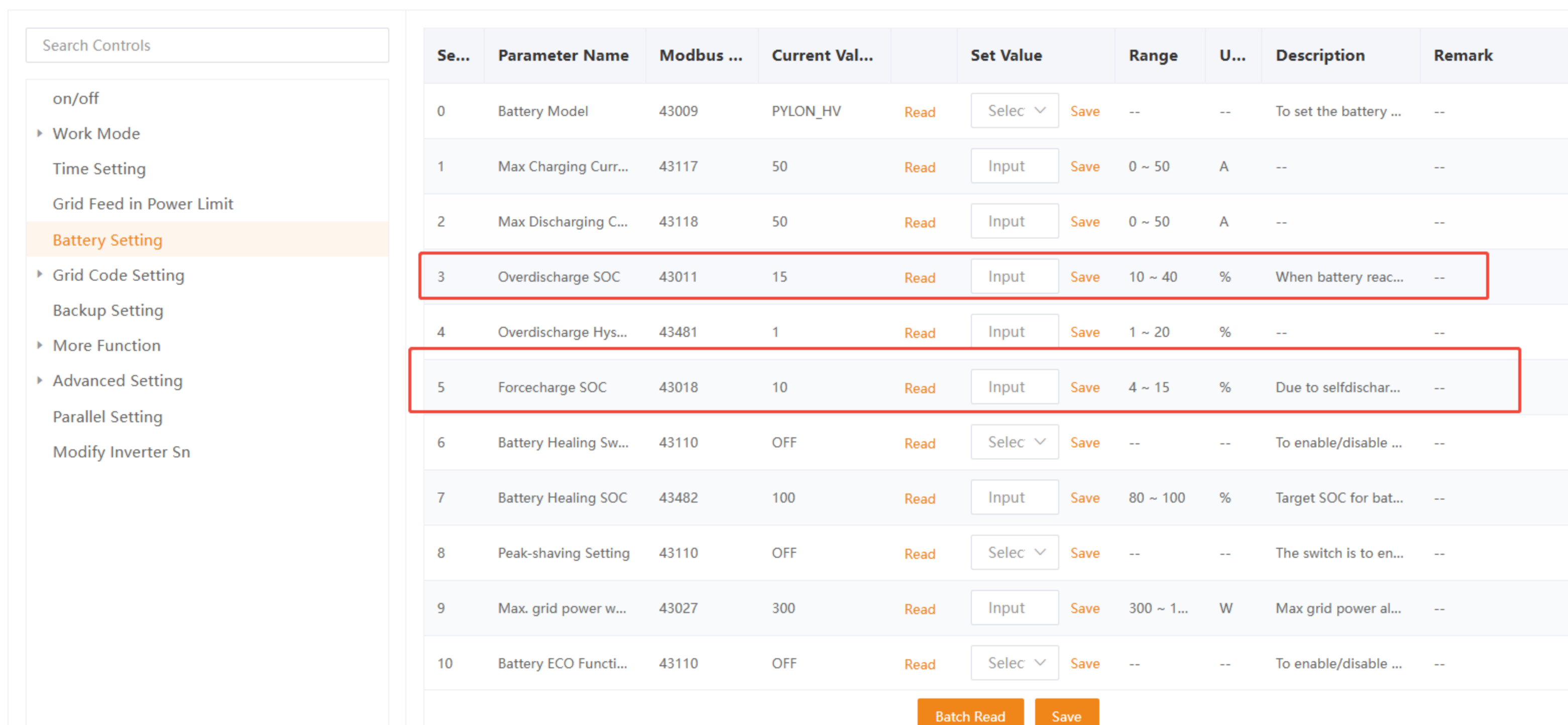

After enabling EMS, why does the Feed-in Power Limit Value on the Inverter Control Page automatically reset to 0?
Determine if the current period has a negative selling tariff. If it does, this parameter will be automatically set to 0 to prevent grid feed-in and avoid economic losses.

When will the new strategy take effect after the parameters have been modified?
- Solis AI Mode: Take effect after a 1-hour delay.
- Other Modes: Take effect immediately. All modifications only affect strategies executed after the configuration time.
What factors does Solis AI take into account when making decisions?
Solis AI combines electricity pricing, weather conditions, photovoltaic (PV) generation forecasts, and load power predictions to automatically generate optimal charging and discharging strategies. The goal of Solis AI is to enhance energy efficiency, lower electricity costs, and maximize revenue for users.
What is the basic logic of Solis AI?
Solis AI focuses on meeting self-consumption needs to lower electricity cost. Based on satisfying self-consumption, it achieves peak-valley arbitrage to generate profits.
Why is there a designated charging period during the day when PV power is available, rather than using it directly for self-consumption?
The purpose of this charging period is to ensure that there is enough battery capacity for the evening peak pricing period. When electricity prices are low, the battery will be charged from the grid. However, if there is sufficient PV power available, the system will instead use this power for charging.
**Why is the charge/discharge power consistently lower than the value I set? **
Please verify whether there are any restrictions imposed by the battery BMS or other physical factors.
Why does the battery SOC jump(fluctuate)?
This is a typical characteristic inherent to BMS. It does not compromise the battery’s actual charging or discharging capabilities, nor does it influence the daily operation of the system.
Why do batteries stay idle instead of being put to further use?
Frequent charging/discharging can damage the lifespan of the battery. To manage battery cycling cost, the system may keep the battery inactive when the electricity price is low.
Why not sell electricity to the grid during peak price periods?
The system refrains from selling when the expected earnings are not able to cover the battery cycling cost.
Why does the system rely on grid power instead of discharging battery power to supply loads?
When Solis AI found that the cost of purchasing electricity was lower than the cost of battery cycling, the system would supply loads by purchasing electricity from the grid. This strategy can also prevent unnecessary damage to the battery. Note: The battery cycling cost is calculated based on the battery purchase price and cycle life. It can be flexibly adjusted for different cell types. The default parameter is 0.05 €/kWh Here is an example: At 4:00 AM, the electricity price is 400 SEK/MWh, and by 12:00 PM, it drops to 40 SEK/MWh. While it may seem advantageous to discharge the battery at 4 AM and then recharge it cheaply at 12 PM, yielding a benefit of 360 SEK/MWh, the actual cost of battery degradation resulting from this discharge and recharge cycle exceeds 360

Why does the system purchase electricity from the grid to charge the battery during low-price periods instead of waiting for charging by PV power?
The system optimizes profit by exploiting price differences through arbitrage. To clarify this concept, please consider the following example: From 2 PM to 4 PM, the system purchases grid electricity at a rate approximately 55 €/MWh, which is typically the lowest price period of the day, to fully charge the battery. This strategy ensures access to low-cost energy in advance. From 4 PM to 6 pm, since the battery is fully charged in advance, the system can sell the PV energy back to the grid at a higher price.
